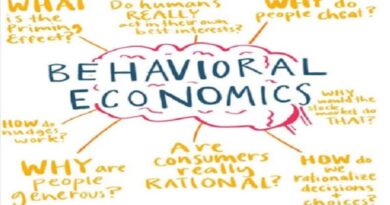The Gig Economy: Redefining Work in the Modern Age
The gig economy has become a defining feature of the modern labor market. Emphasizing short-term contracts, freelancing, and on-demand work, it is revolutionizing traditional employment practices. But what does the gig economy entail, and what are its broader implications for workers, businesses, and society?
What is the Gig Economy?
The gig economy is characterized by a labor market that focuses on temporary, flexible jobs, often facilitated through digital platforms. These platforms connect workers with various short-term tasks or “gigs,” ranging from ride-sharing and food delivery to freelance writing and graphic design. This model allows individuals to juggle multiple jobs or projects, offering a level of autonomy and flexibility not found in traditional employment.
Factors Driving the Gig Economy’s Growth:
Several key factors have fueled the rise of the gig economy:
- Technological Innovation: The advent of smartphones, apps, and online platforms has streamlined the process of finding and completing gigs, making it more accessible for workers and businesses alike.
- Shifting Work Preferences: Many workers, particularly from younger generations, prioritize flexibility, work-life balance, and the ability to choose their projects. The gig economy caters to these desires by offering diverse opportunities and remote work options.
- Economic Dynamics: Economic instability and changes in traditional job markets have led many to seek alternative income sources. The gig economy provides a safety net, enabling individuals to supplement their income or transition between jobs.
Benefits of the Gig Economy:
The gig economy offers several advantages:
- Flexibility: Gig workers can set their schedules, choose their projects, and work from various locations, providing greater control over their work-life balance.
- Variety of Opportunities: With gigs spanning numerous industries and roles, workers can explore different fields and develop a versatile skill set.
- Cost Efficiency for Businesses: Companies save on expenses associated with full-time employees, such as benefits and office space, by hiring gig workers for specific tasks or peak periods.
- Agility and Innovation: Businesses can swiftly adapt to market changes by leveraging the gig economy, scaling their workforce up or down as needed.

Challenges of the Gig Economy:
Despite its advantages, the gig economy also poses significant challenges:
- Job Security: Gig workers often face income and job stability uncertainty, as gigs can be sporadic and unpredictable.
- Lack of Benefits: Gig workers typically do not receive benefits like health insurance, retirement plans, or paid leave, making it difficult to manage long-term financial and health needs.
- Regulatory and Legal Issues: The gig economy operates in a gray area of labor law, raising questions about worker classification, rights, and protections. Governments and regulatory bodies are still determining how to address these issues.
- Income Inequality: The gig economy can exacerbate income inequality, with high-skilled workers commanding higher pay while low-skilled workers face low wages and job insecurity.
The Future of the Gig Economy:
The gig economy is expected to continue its growth and evolution, influenced by technological advancements and changing worker preferences. Key trends likely to shape its future include:
- Increased Regulation: Governments will likely introduce more regulations to protect gig workers’ rights and ensure fair treatment, including minimum wage laws and benefits.
- Enhanced Worker Protections: Businesses and platforms may develop new models to offer gig workers greater security and benefits, such as portable benefits plans or collective bargaining agreements.
- Technological Advancements: The integration of artificial intelligence (AI) and automation in gig platforms will improve the matching process between workers and gigs, enhance efficiency, and create better user experiences.
- Global Expansion: The gig economy is poised to expand globally, reaching new markets and demographics, and providing opportunities for workers and businesses worldwide.
Conclusion:
The gig economy is reshaping how work is structured and performed, offering unprecedented flexibility and opportunities while posing significant challenges that must be addressed. As the gig economy advances, it’s essential for policymakers, businesses, and workers to work together on strategies that harmonize flexibility with stability and fairness. By addressing these challenges, we can fully harness the potential of the gig economy, fostering a more vibrant and inclusive employment landscape.
FAQs:
1. What is the gig economy?
The gig economy is a labor market defined by short-term, flexible job opportunities, often facilitated through digital platforms. These roles can range from freelance projects and temporary contracts to on-demand services, offering workers the chance to set their own schedules and choose their work.
2. How does the gig economy compare to traditional jobs?
Traditional jobs typically involve permanent, full-time positions with fixed hours and benefits, while the gig economy offers short-term, flexible work arrangements. Gig workers have more control over their tasks and schedules but may face less stability and fewer traditional benefits.
3. What kinds of gigs are common in the gig economy?
Common gigs include roles like ride-share drivers, food delivery personnel, freelance writers, graphic designers, web developers, and various task-based jobs such as cleaning or pet care.
4. What are the benefits of working in the gig economy?
The gig economy provides benefits such as enhanced flexibility, the ability to select projects and clients, and the option to work from various locations. It allows workers to pursue multiple income streams and better manage their work-life balance.
5. What challenges do gig workers face?
Gig workers may face challenges such as inconsistent income, the absence of traditional employment benefits (like health insurance and retirement plans), and job insecurity. Additionally, they might struggle with tax management and navigating the complexities of gig work legality.
6. How can gig workers handle fluctuating income?
To manage income fluctuations, gig workers can save a portion of their earnings during peak periods, diversify their gig sources, and budget effectively. Building an emergency fund and using financial planning tools can also help mitigate financial instability.
7. Are there legal protections for gig workers?
Legal protections for gig workers vary and are continually evolving. Some regions are implementing new regulations to enhance workers’ rights, such as minimum wage standards and benefits. Gig workers may need to advocate for themselves to ensure fair treatment.
8. What impact does the gig economy have on businesses?
Businesses benefit from the gig economy by accessing a flexible workforce that can adjust to changing demands. This model helps reduce fixed costs associated with full-time employees and allows companies to remain agile and responsive to market needs.
9. What are common myths about the gig economy?
Common myths include the idea that gig work is inherently unstable and low-paying, that all gig workers are freelancers, or that gig work lacks satisfaction. In reality, gig work can offer competitive pay, diverse opportunities, and high levels of personal satisfaction.
10. How can businesses successfully integrate gig workers?
Businesses can effectively integrate gig workers by clearly defining project goals, maintaining open lines of communication, ensuring fair pay, and providing necessary resources. Building positive working relationships and offering timely feedback can enhance collaboration.
11. What role does technology play in the gig economy?
Technology is crucial in the gig economy, connecting workers with gigs through apps and online platforms. It streamlines the process of finding and managing work, facilitates payments, and enhances the efficiency of matching workers with tasks or clients.
12. What future developments are expected in the gig economy?
Future developments may include increased regulatory measures to protect gig workers, advancements in technology like AI-driven platforms, and a greater focus on providing benefits and support. The gig economy is also expected to grow globally, bringing new opportunities and challenges.
13. How can gig workers find dependable gigs?
Gig workers can find reliable gigs by using well-regarded platforms, networking within their industry, and building a strong online presence. Positive reviews, a robust portfolio, and professional connections can help attract quality opportunities.
14. How does the gig economy affect traditional employment?
The gig economy influences traditional employment by introducing alternative work models and challenging conventional job structures. While it offers flexibility, it also raises issues of job stability and changes in how benefits and protections are provided.
15. How can policymakers support the gig economy?
Policymakers can support the gig economy by developing regulations that ensure fair treatment, protect workers’ rights, and provide access to benefits. Creating an environment that encourages innovation and addresses the unique challenges of gig work is also crucial.




